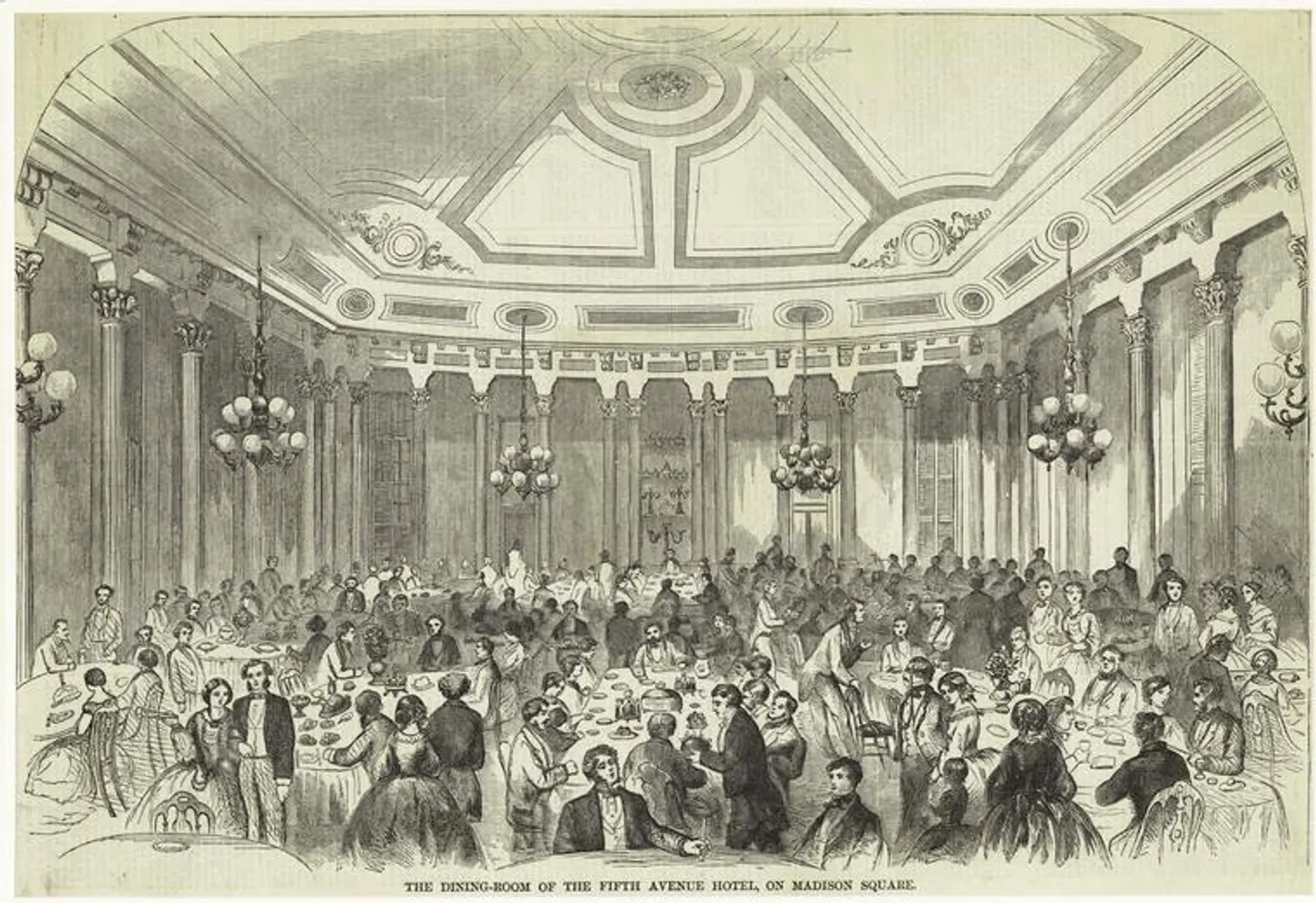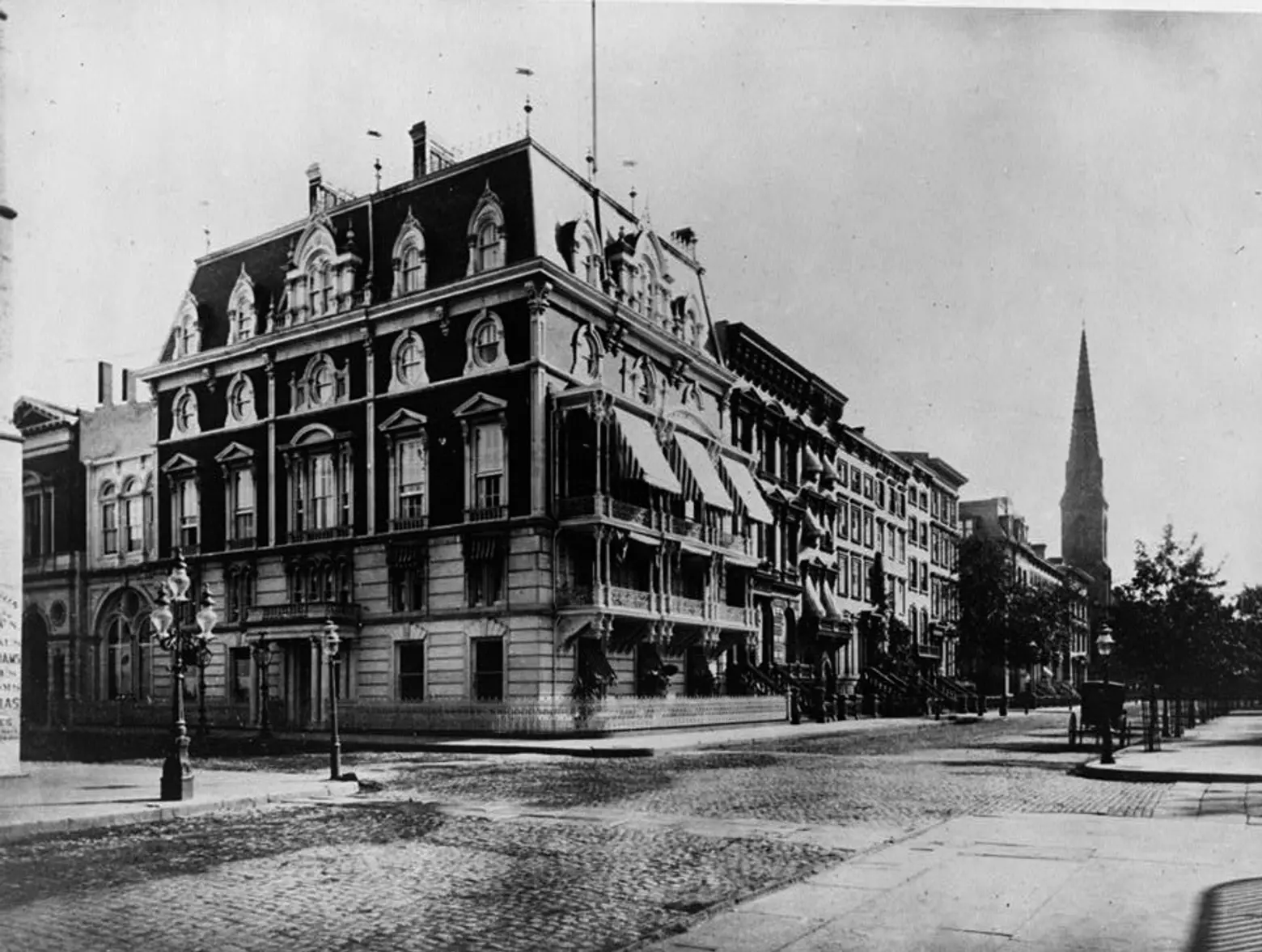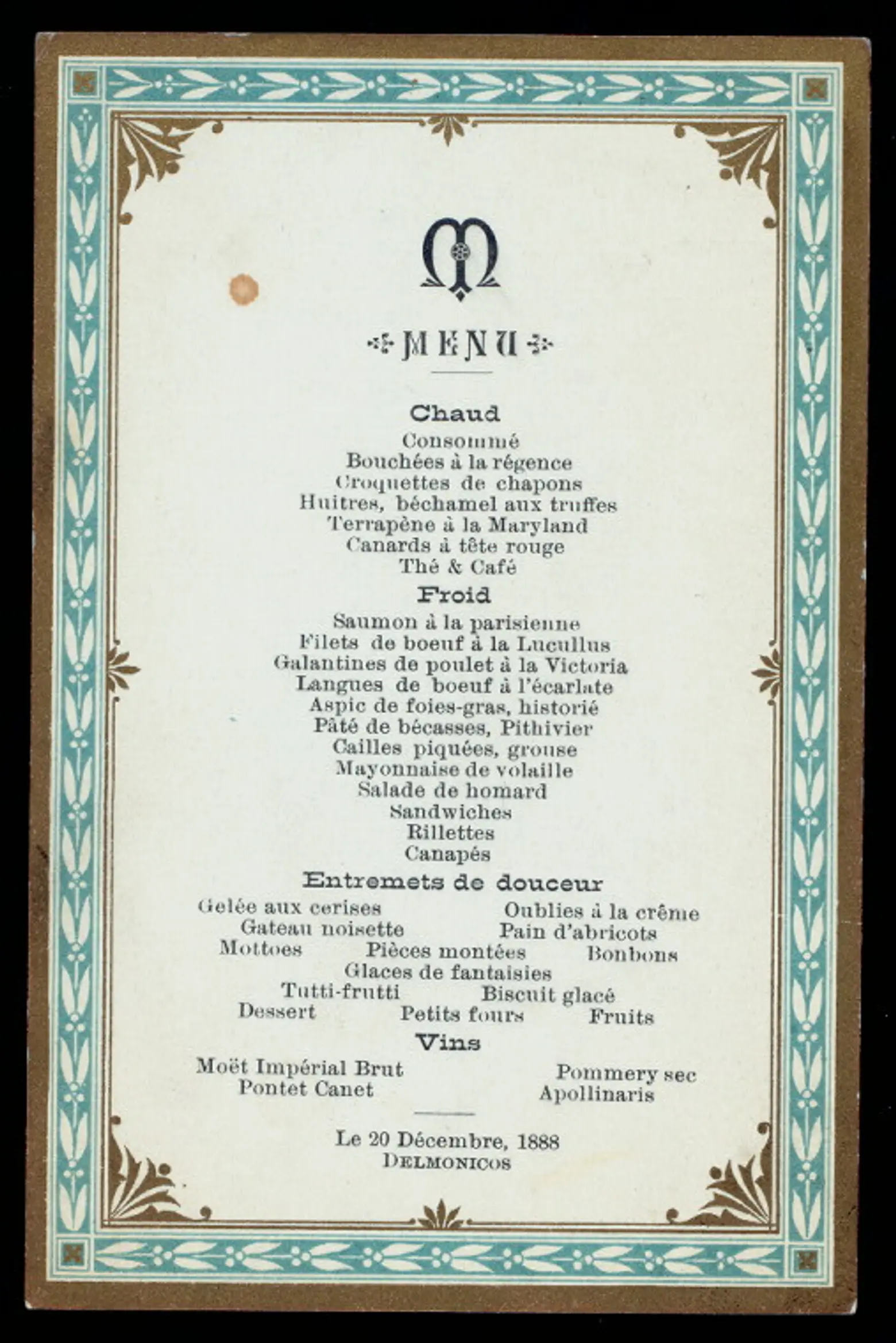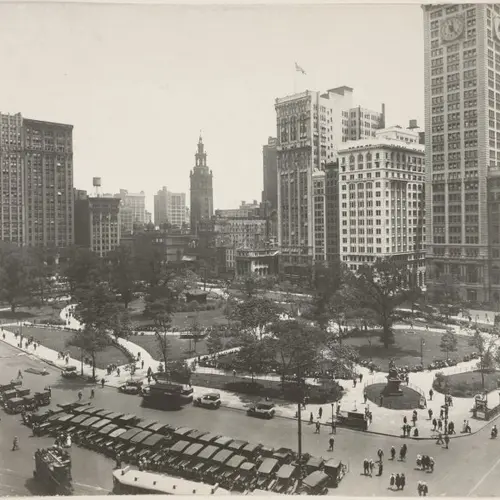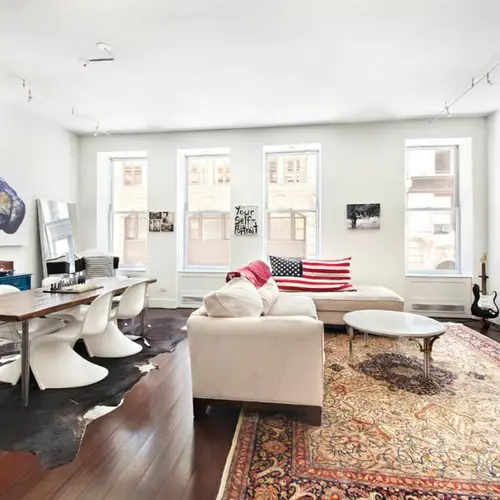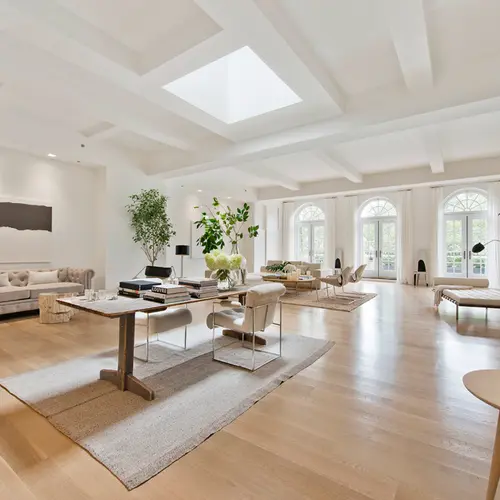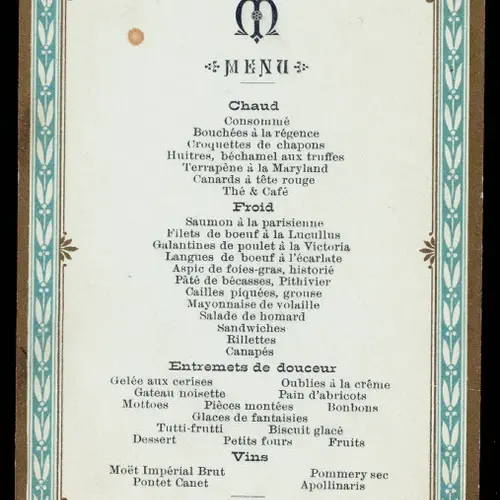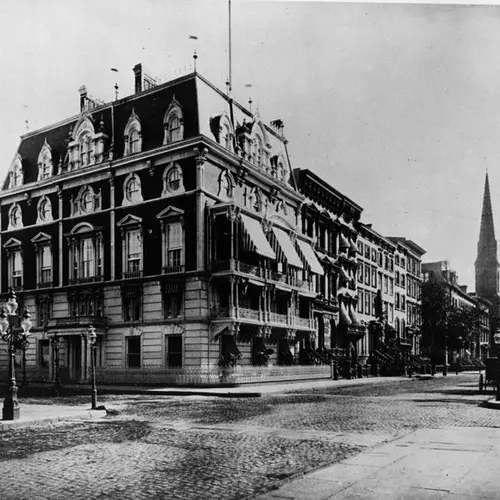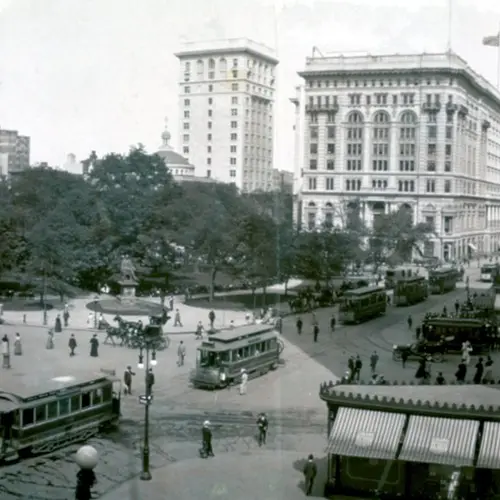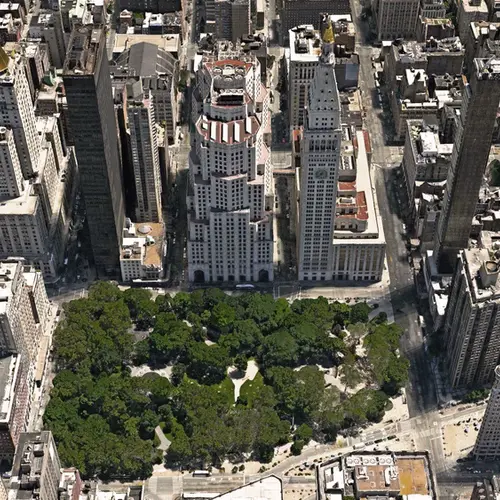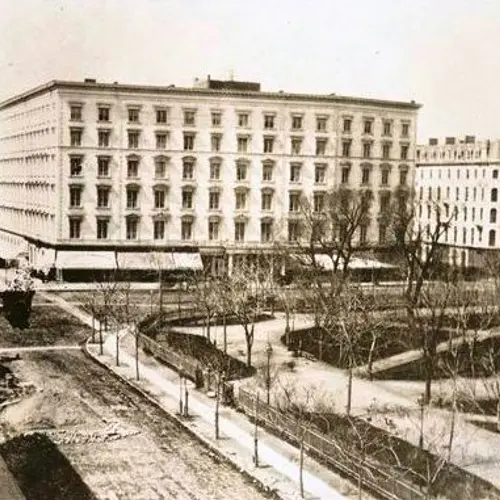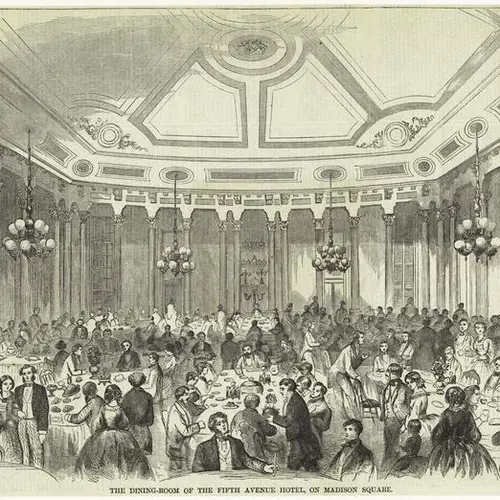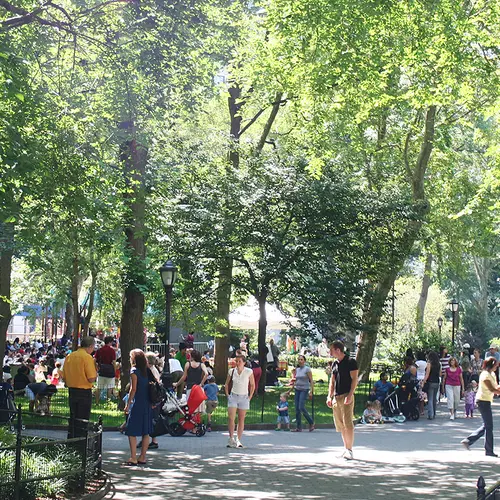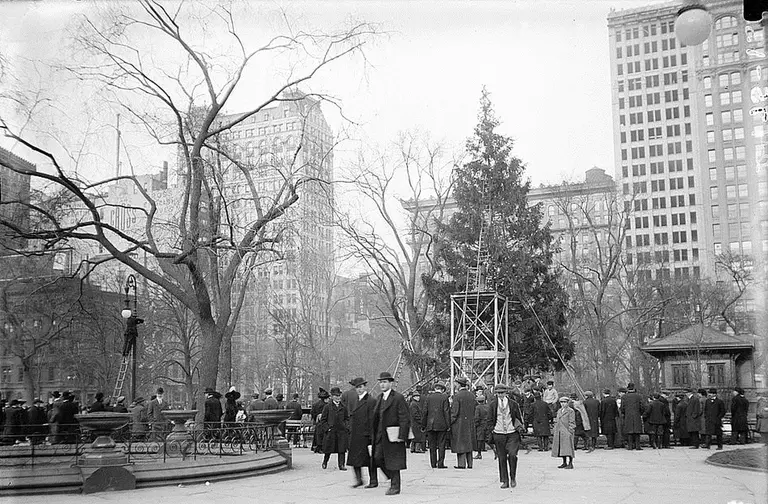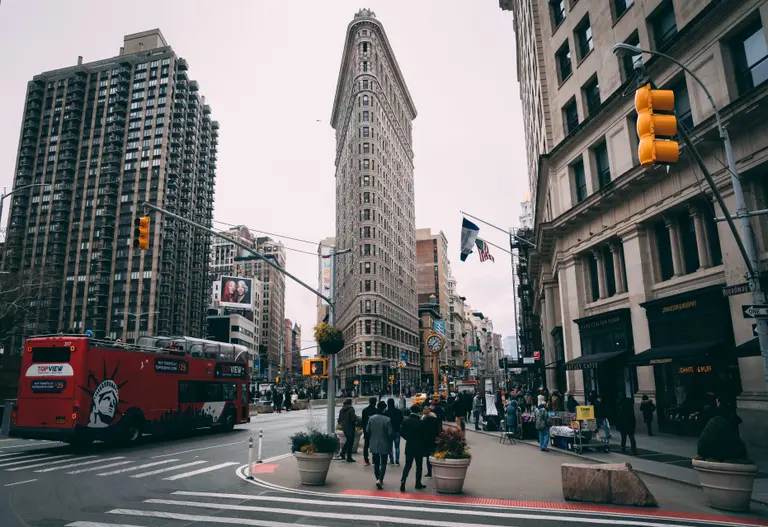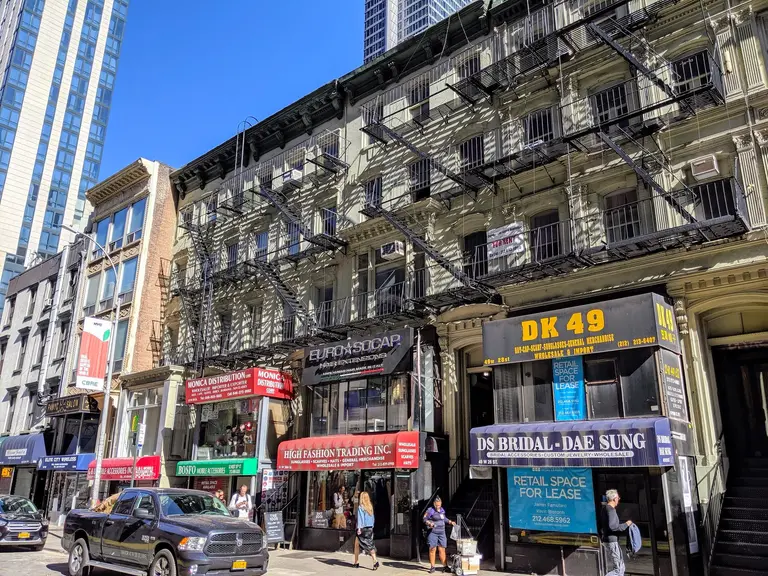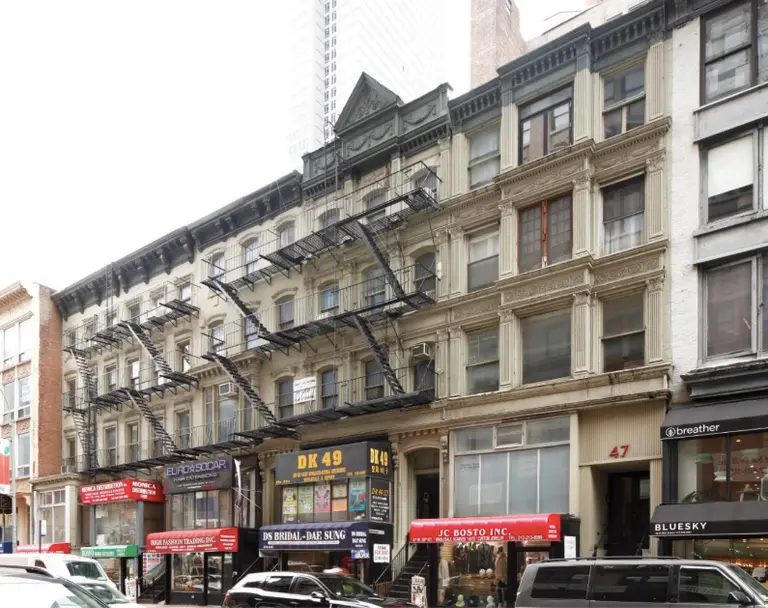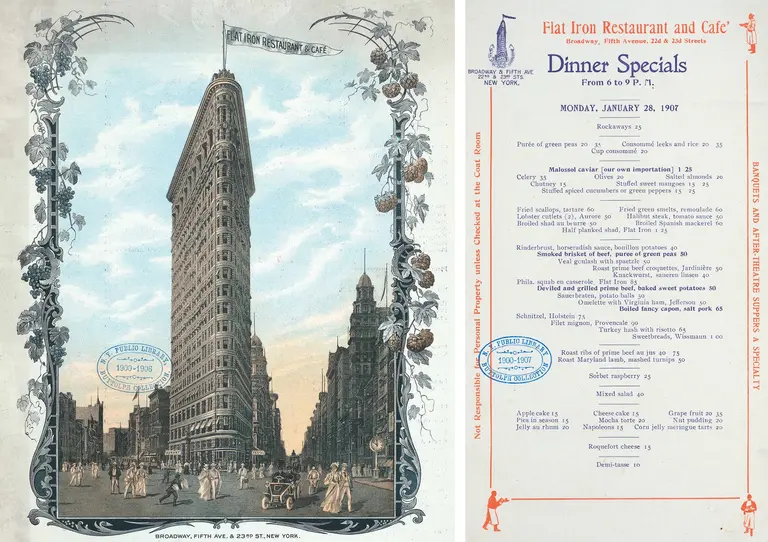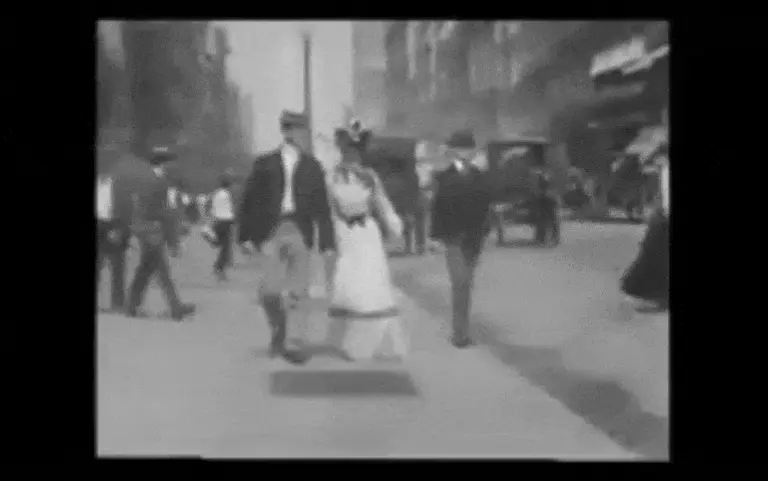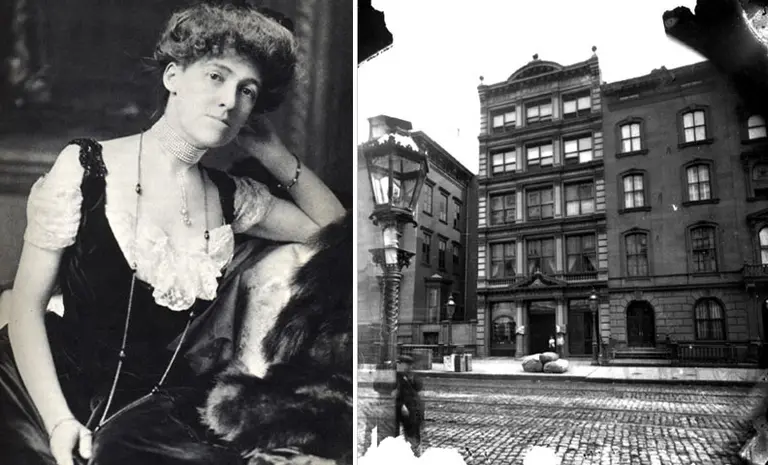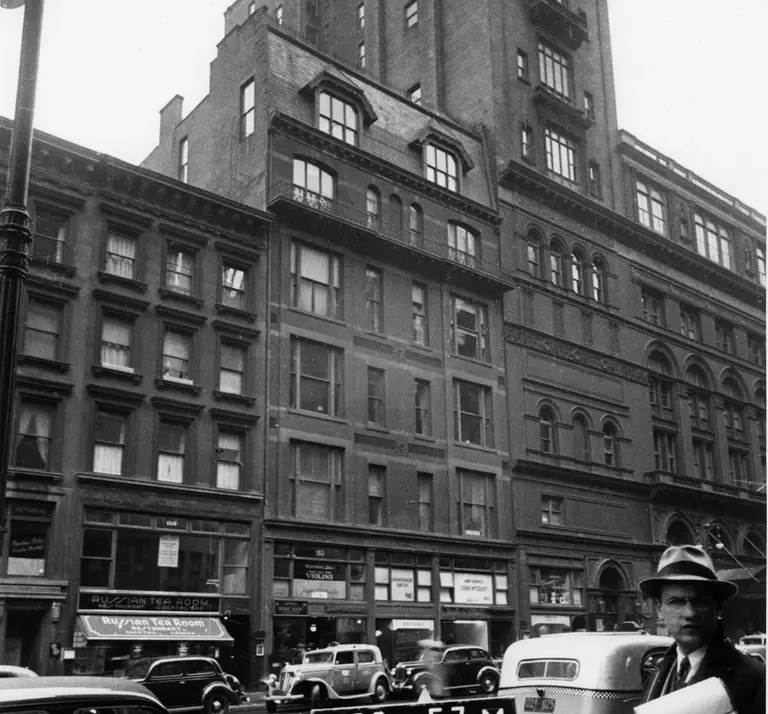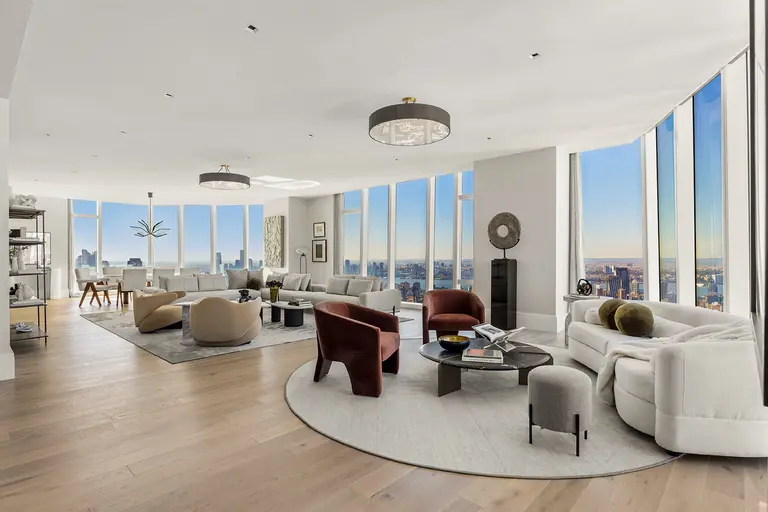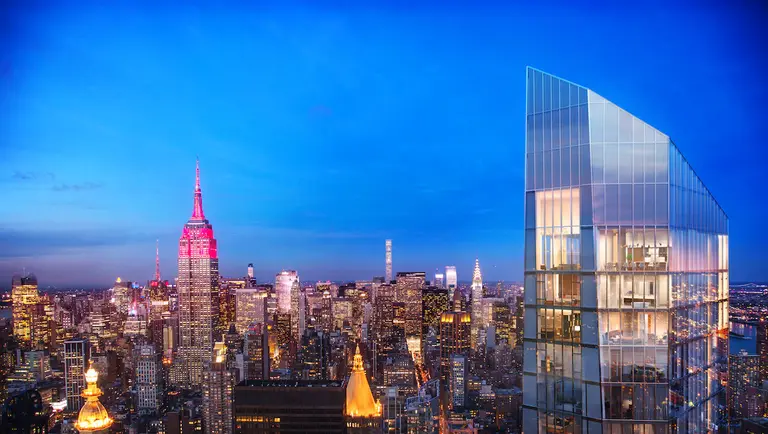Tracing the Colorful History of Madison Square Park from the 1800s
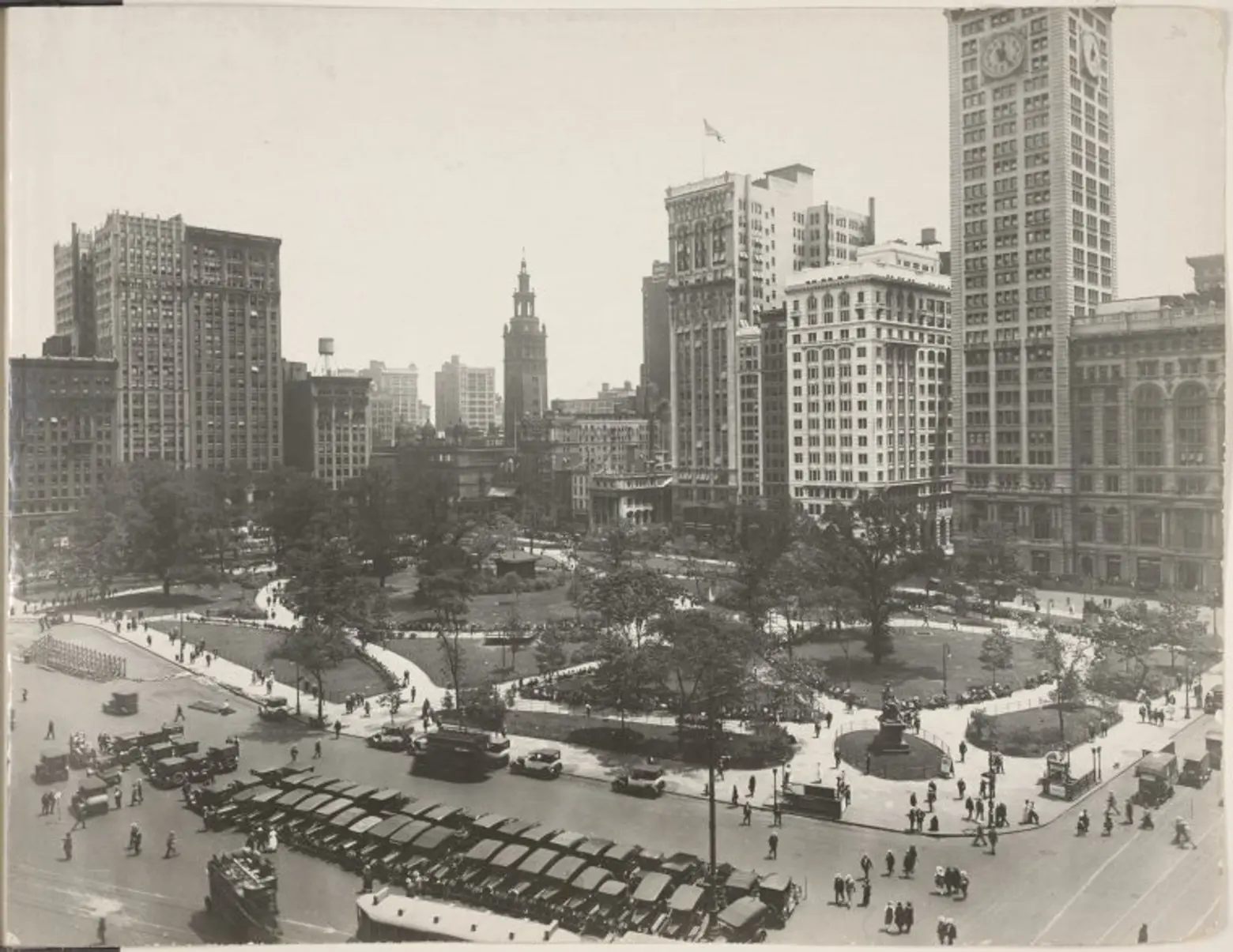
Recent reports show that NoMad has taken over the top spot for priciest neighborhood in the city in which to rent, with a one-bedroom unit going for an average of $4,270/month. For most real estate aficionados this isn’t shocking, as the neighborhood has been growing into one of the city’s hottest spots for the past several years, but few know of the area’s fascinating past.
Named for our fourth president, James Madison, the 6.2-acre Madison Square Park was first used as a potter’s field, then an army arsenal, then a military parade ground and finally as the New York House of Refuge children’s shelter, until it was destroyed by a fire in 1839. After the fire, the land between 23rd and 26th Streets from Fifth to Madison Avenues was established as a public park enclosed by a cast-iron fence in 1847. The redesign included pedestrian walkways, lush shrubbery, open lawns, fountains, benches and monuments and is actually similar to the park that exists today.
In the later 19th century, Madison Square rose to fame and was defined as of one of Manhattan’s most elite neighborhoods. The city’s most fashionable residences and hotels could be found bordering the park, and one of the first envy-inducing accommodations to pop up here included the luxurious Fifth Avenue Hotel at 200 Fifth Avenue. Each of the Fifth Avenue Hotel’s 500 rooms had fireplaces and private bathrooms. It was also the first hotel to install a steam-operated elevator. 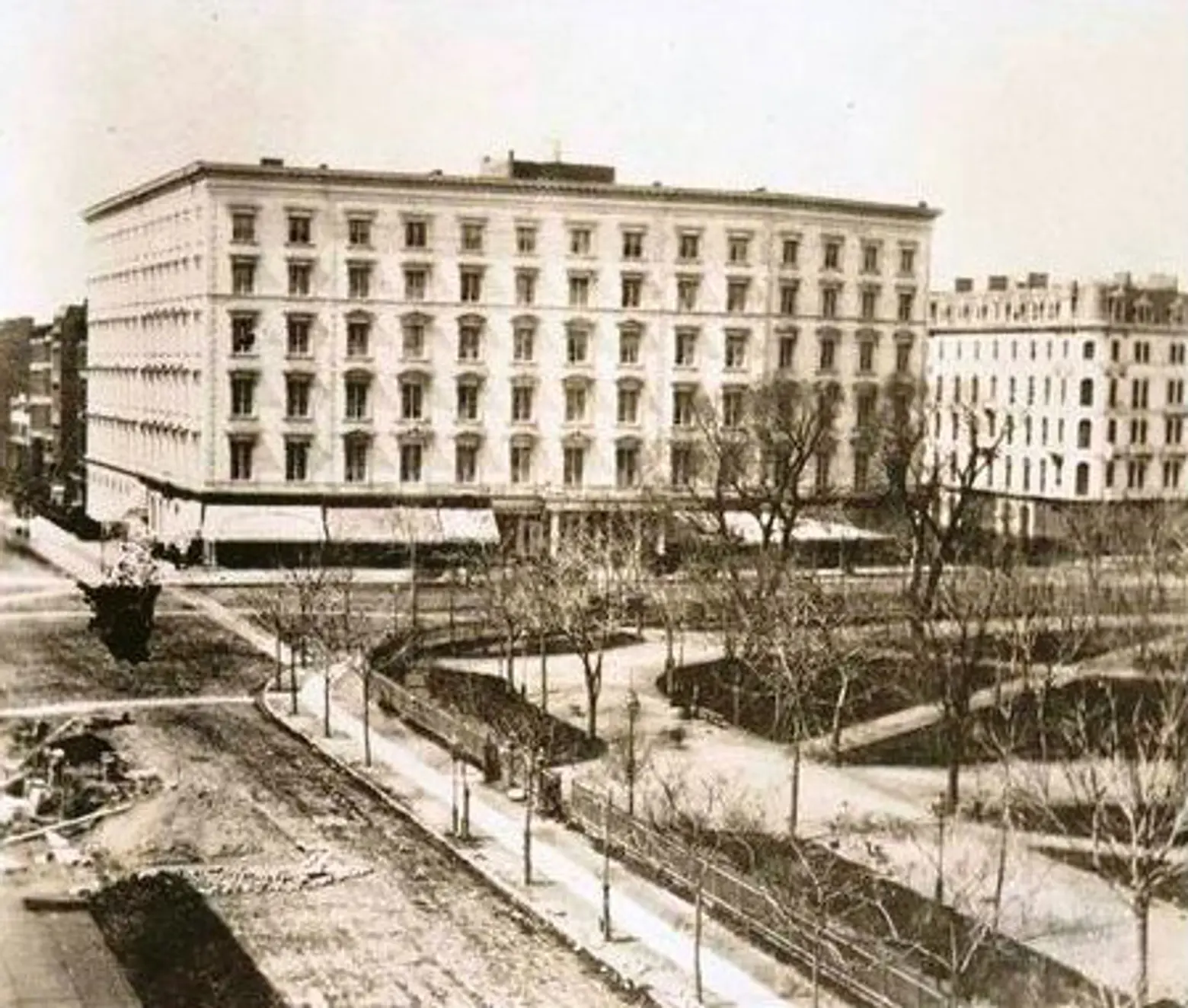 The guest register included nine U.S. presidents, including Ulysses S. Grant and Chester A. Arthur, and from England, Edward, Prince of Wales.
The guest register included nine U.S. presidents, including Ulysses S. Grant and Chester A. Arthur, and from England, Edward, Prince of Wales.
Between 1859 and 1908, other upper crust guests would often see the likes of Boss Tweed and Commodore Vanderbilt imbibing potent potables late into the night. Also an important gathering place for serious conversation, it was in the spring of 1881 that the U.S. Tennis Association was founded at this very hotel.
The building was eventually demolished in 1908, and the site became known as the Fifth Avenue Building; the Hecla Iron Works clock outside its front door was designated as a landmark in 1981. Now known as the Toy Center complex (with 1107 Broadway), an attempt to convert the building to a condominium was considered not all that long ago, but it ultimately became a LEED-Gold certified commercial building with a magnificent, 6,000-square foot bamboo-planted courtyard garden. Though the hotel is long gone, glamorous tenants continue to occupy the space today. Grey Advertising, Tiffany & Co. and Eataly are just a few of the famed names to call the building home.
 The Square and Park in 1908; the “cowcatcher” and “prow” of the Flatiron Building are on the right
The Square and Park in 1908; the “cowcatcher” and “prow” of the Flatiron Building are on the right
The historic district also flourished as a bustling commercial community peppered with now-landmarked buildings such as the Metropolitan Insurance Building, the New York Life Insurance Building, the New York State Supreme-Appellate Courthouse and the Flatiron Building. But big landmark buildings aside, there were several smaller commercial buildings built in the 1880s and 1890s. Two notable ones include 21 West 26th Street, built by John Jacob Astor as the Queen Anne-style headquarters of his real estate empire, and 256 Fifth Avenue, built by Charles A. Baudouine as a Moorish Revival structure occupied by the famous photographer Napoleon Sarony, who was well-regarded for his portraits of stars of late 19th century theater, including Sarah Bernhardt.
This neighborhood was also home to P.T. Barnum’s 1874 Great Roman Hippodrome and the first and second Madison Square Gardens arenas. The second arena’s Roof Garden restaurant and theater gained notoriety in 1906 when 52-year-old architect Stamford White was fatally shot by Harry K. Thaw—the husband of Evelyn Nesbitt, who had been White’s 15-year-old chorus girl mistress from 1900 to 1903. Nesbitt was well known by then as the girl in the red-velvet swing that was inside White’s studio on West 24th Street.
Well-to-do families, including Leonard W. Jerome, the maternal grandfather of Winston Churchill, owned elegant mansions surrounding the park. Jerome’s house was located at 32 East 26th Street. A massive home by anyone’s standard, it featured a 600-seat theatre, a breakfast room to accommodate 70 guests, a ballroom and cologne-spouting fountains. The flamboyant stock speculator, dubbed “The King of Wall Street,” also founded the Academy of Music, one of the city’s earliest opera houses. By 1868, the six-story mansion became home to various high-society hangouts such as the Union League Club, the University Club and finally the Manhattan Club, where members like Grover Cleveland, Alfred E. Smith, and Franklin D. Roosevelt dropped by for cocktails and bonhomie. The Jerome Mansion was also the site of a meeting that founded the Metropolitan Museum of Art at the close of the 1860s.
Though the house obtained landmark status in 1965, two years later the city permitted its owner to demolish it in order to build the New York Merchandise Mart (a.k.a. 1 Madison Square Plaza), which opened in 1974. Next door to the Jerome mansion was the Madison Square Hotel, where up-and-coming Hollywood actors such as Henry Fonda and James Stewart booked rooms on a regular basis in the 1930s. Unfortunately, to make way for the Merchandise Mart, the hotel was also demolished.
Delmonico’s multi-story restaurant with a large sidewalk café was located at Fifth Avenue and 26th Street between 1876 and 1899 and attracted the Gilded Age elite. The restaurant became famous for introducing lobster Newburg during its first year on Fifth Avenue; famous diners included Oscar Wilde, Mark Twain, Charles Dickens, J.P. Morgan, France’s Napoleon III, and Britain’s King Edward VII while he was Prince of Wales. Designed for New York’s elite, the first floor’s silver chandeliers hung from a fresco ceiling, the walls were covered in mirror and colorful blooms bordered a fountain that stood smack dab in the middle of the room. A red and gold ballroom was located on the second floor along with several satin-clad dining rooms. Above the third floor’s dining rooms and colorful banquet halls, confirmed bachelors took up residence in a number of apartments. On the very top floor, servants’ quarters, storage rooms and a laundry facility was installed.
Despite the park’s prominent location and cultural significance, by the 1990s, like many parts of New York, it had fallen into disrepair with significant damage to eight prized monuments, including one, honoring Civil War hero Admiral Farragut, that was said to be American sculptor Augustus Saint-Gaudens’s first major work. To bring the park back to its former glory, the City Parks Foundation took the lead in organizing the “Campaign for the New Madison Square Park,” (the precursor organization to the Madison Square Park Conservancy) to restore it, using the original 19th century design as well as adding more contemporary amenities, including a reflecting pool, new gateways and ornamental lighting. In 2004, the wildly popular Shake Shack kiosk established its first home inside the park.
Fun Madison Square Park facts include… the claim that the park is the birthplace of baseball, since Alexander Cartwright formed the first baseball club known as the New York Knickerbockers in 1842; the Statue of Liberty’s arm and torch were proudly displayed here from 1876 to 1882, not just as an exhibit, but as a means to raise funds for constructing the pedestal and assembly on Bedloe’s Island at the mouth of the Hudson River; America’s first community Christmas tree was illuminated on the grounds on Christmas Eve 1912.
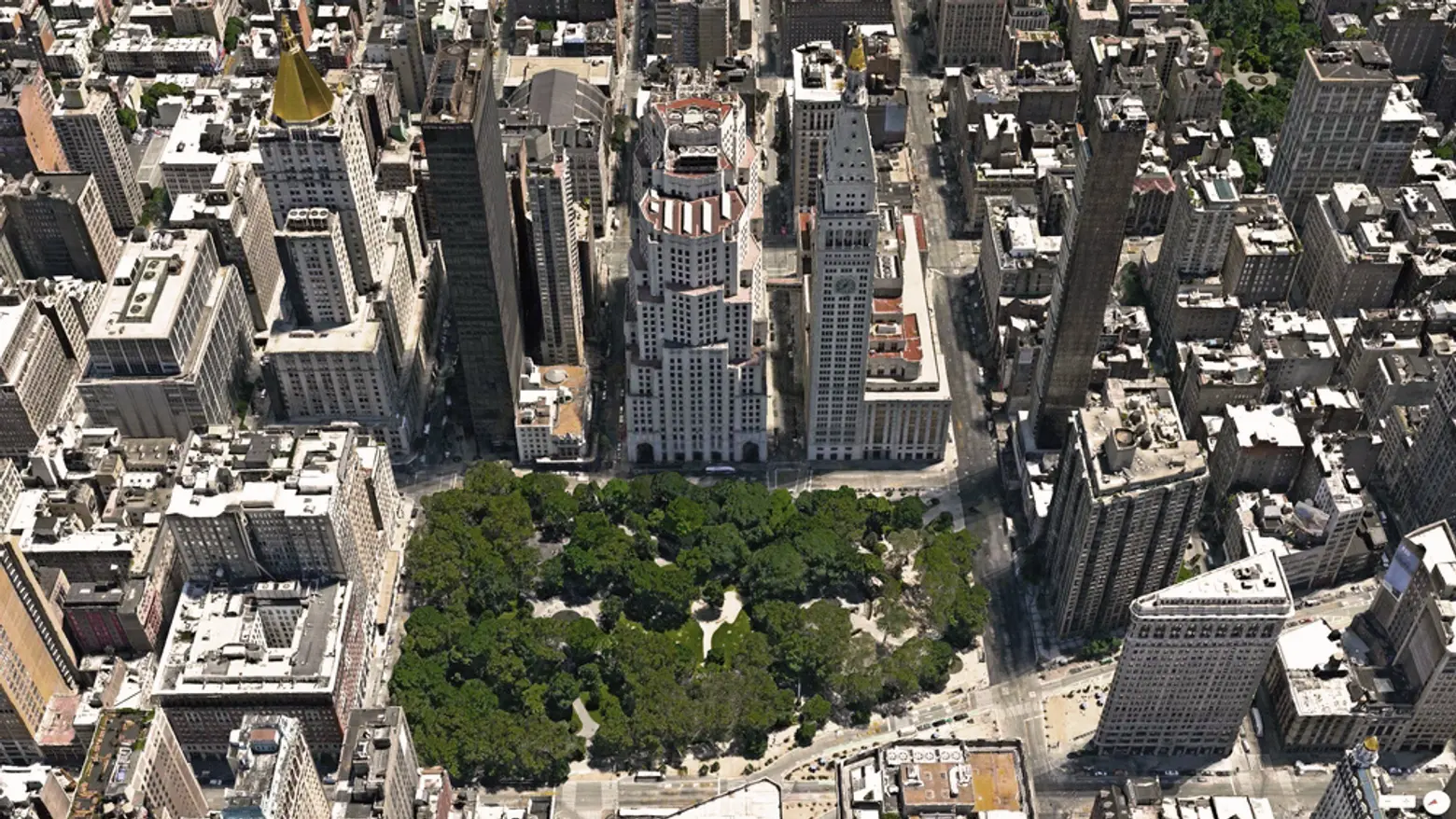
NoMad Real Estate
For buyers looking to live in or close to the Historic District of Madison Square North (which may soon be doubling in size), there are a myriad of choices available. The blurry boundaries of a neighborhood now known as NoMad run from West 25th to West 30th Streets between Lexington and Sixth Avenues. Ironically, another historic district ends where NoMad begins: Ladies’ Mile, a shopper’s paradise from the mid-19th to the early-20th century, ran from 15th to 24th Streets between Sixth Avenue and Park Avenue South. Department stores such as Lord & Taylor, B. Altman and R.H. Macy reigned supreme—and Siegel-Cooper was considered the largest store in the world when it opened in 1896. In fact, on opening day they reportedly hired some 9,000 employees (clerks, packers and drivers) because they expected their debut to attract nearly 200,000 shoppers.

45 East 22nd Street
At 45 East 22nd Street between Broadway and Park Avenue South, the Continuum Company is developing a 64-story condominium designed by the acclaimed architectural firm of Kohn Pedersen Fox Associates with 83 homes that range from one- to four-bedrooms. In fact, the building–the neighborhood’s future tallest tower–won our 2014 Building of the Year contest. Occupancy is set for the fall of 2016, and units are currently available from $4.2 million for a two-bedroom unit to $21 million for a four bedroom.
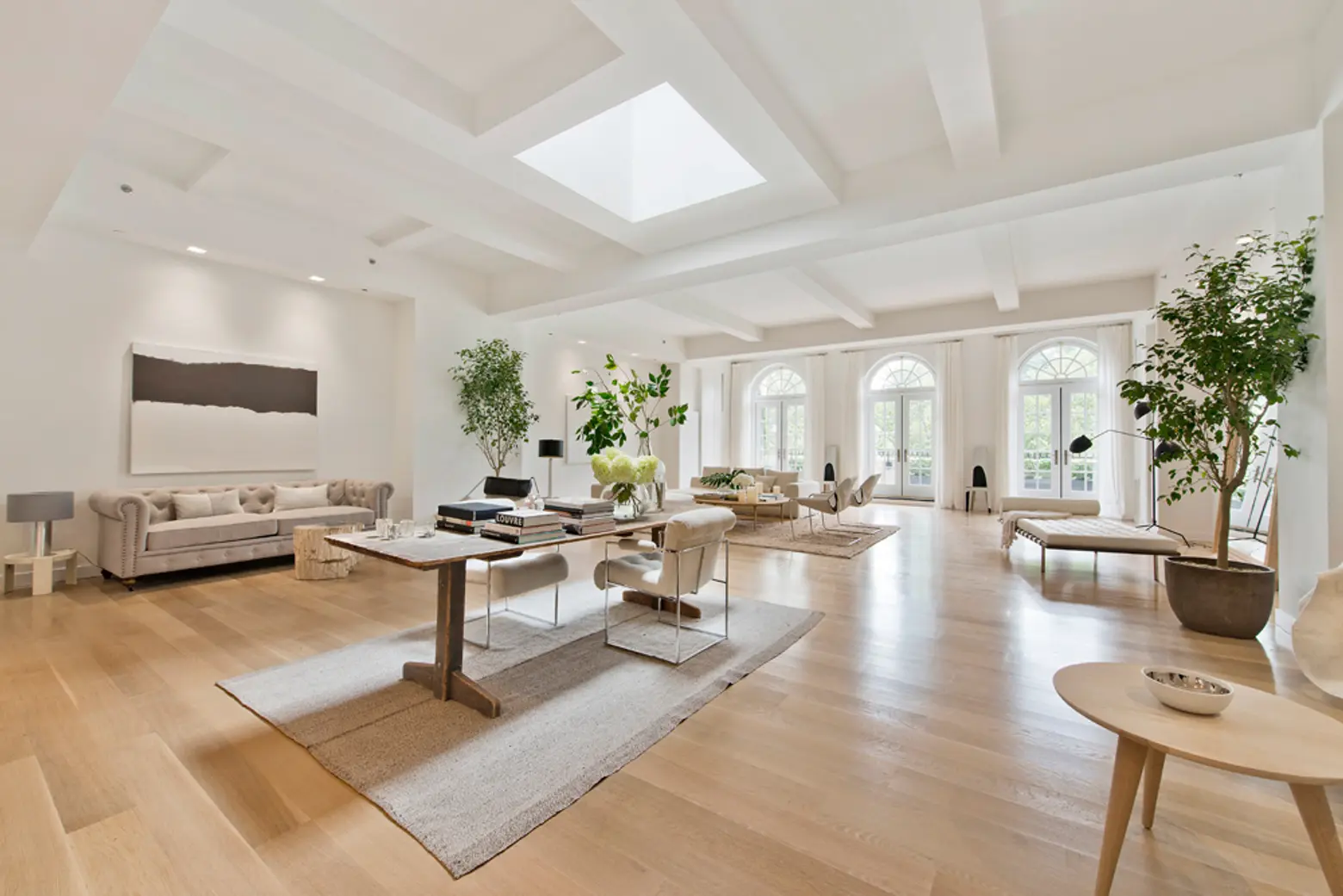 The duplex penthouse at 21 East 26th Street
The duplex penthouse at 21 East 26th Street
Last fall Jennifer Lopez bought a terrific duplex penthouse at The Whitman at 21 East 26th Street, where Chelsea Clinton and her husband also reside. The unit has direct views of Madison Square Park, more than 6,500 square feet of interior space and four terraces adding up to over 3,000 square feet of private outdoor space. The four-bedroom home with ceiling heights as tall as 12.4 feet, has, as one would expect, exquisite finishes and features. It was listed for $22.25 million.

Unit 4W at 50 West 29th Street
At 50 West 29th Street, Halstead is offering an ultra-modern, industrial-style loft for $3.84 million. The two-bedroom live/work loft boasts dark-stained, fully sprung, dance-studio quality, red maple floors and 70 feet of western-facing oversized windows with zinc frames. The open great room is 80 feet long and features a living/dining room combination and an open kitchen.
RELATED:
